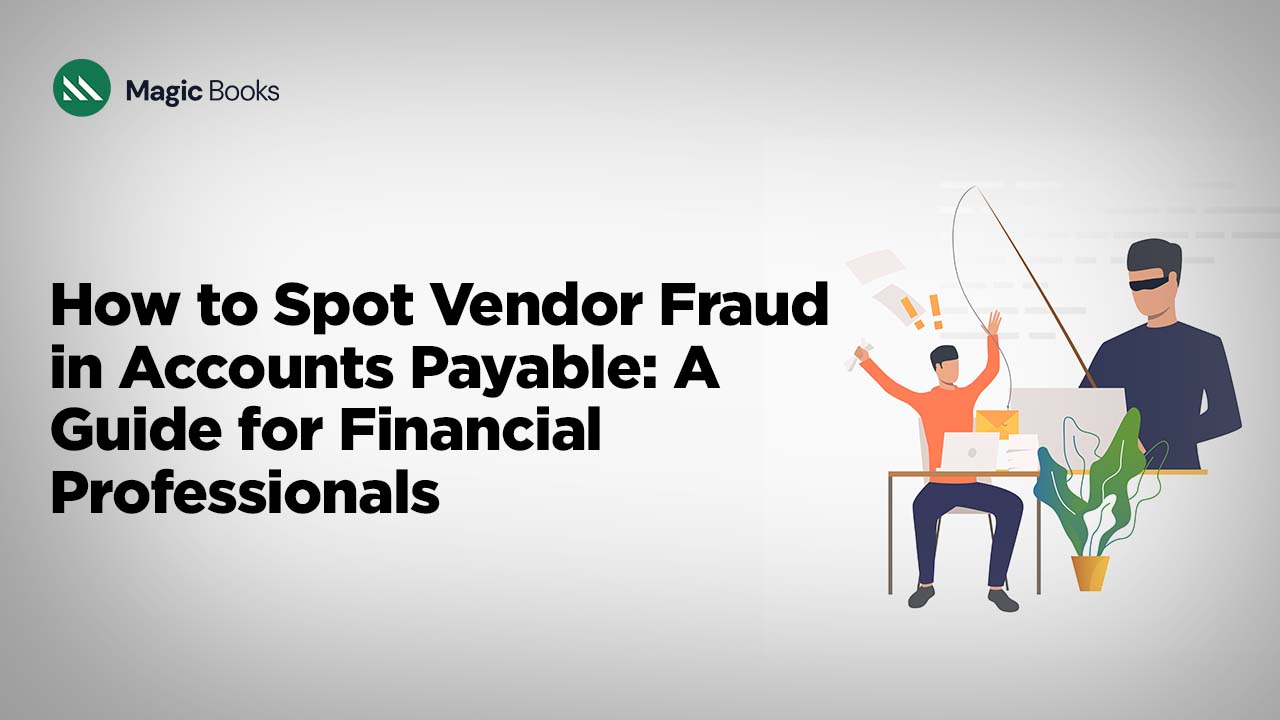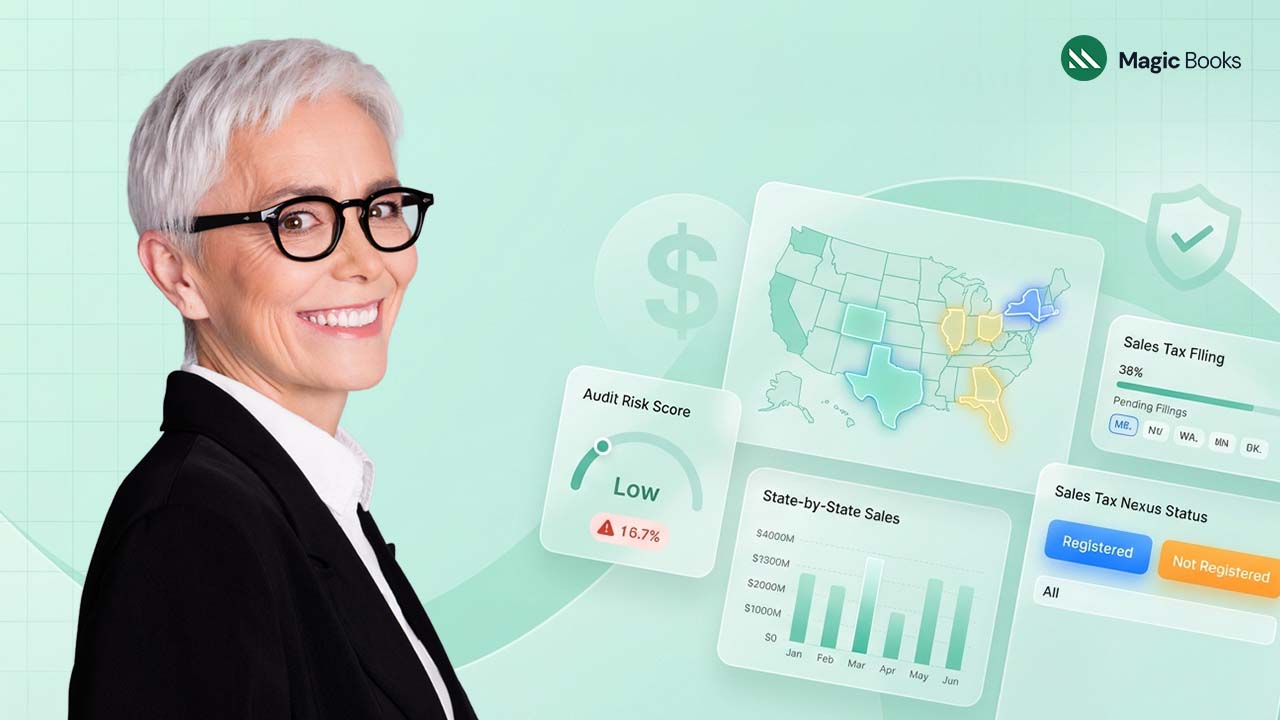Nearly 80% of organizations experienced attempted or actual payment fraud in 2024. Stop and think about that for a second. Four out of five companies. When you also consider that the Association of Certified Fraud Examiners consistently finds organizations losing a meaningful share of revenue to fraud annually, the scope of this problem becomes impossible to ignore. If you’re working as a financial advisor, bookkeeper, or accountant (basically anyone with their hands in accounts payable), these aren’t just abstract statistics. This is your reality. Learning to recognize vendor fraud early can mean the difference between a near-miss and a catastrophic loss that tanks both organizational finances and your professional reputation.
What Is Vendor Fraud
Vendor fraud happens when people manipulate accounts payable systems to steal money. Pretty straightforward concept, right? But the execution gets messy. You’ve got legitimate vendors inflating invoices or billing for work they never actually did. Then there are completely fake vendors, basically shell companies someone dreamed up just to siphon off funds. And don’t forget the inside job scenario, where employees partner with outside parties to orchestrate the whole thing.
What sets vendor fraud apart from your garden-variety payment fraud is where it hits. This specifically targets the procurement and payment cycle, making AP departments ground zero for these schemes. Fraudsters go after weak spots in how you vet vendors, how payment approvals flow through your system, and how well you document everything. Or, more accurately, how poorly.
Why Accounts Payable Is Vulnerable
Picture what your typical AP team juggles on any given day. Dozens or hundreds of invoices. Payment requests coming from every direction. Multiple vendor relationships to track. Different amounts, different frequencies, different payment terms. It’s a lot, and all that complexity? That’s exactly what creates openings.
Business email compromise continues to dominate the fraud space. In 2024, 63% of survey respondents flagged it as their top concern for attempted and actual payments fraud, with spoof emails representing 79% of those attacks. The FBI’s numbers make this even more real. From October 2013 through December 2023, business email compromise caused over $55 billion in domestic and international losses. Billion. With a B.
Here’s another trend that should keep you up at night. Vendor imposter fraud saw an 11-percentage-point spike in 2024 versus the previous year. These criminals aren’t static. They’re constantly evolving their playbook. Wire transfers, which many finance teams previously considered relatively secure, became the most frequently targeted payment method for BEC scams in 2024. Sixty-three percent of respondents reported this trend, compared to only 39% the year before.
So why does accounts payable take the brunt of these attacks? Well, a lot of organizations still don’t have solid verification protocols when vendors request changes to payment details. Email gets spoofed easily, way easier than most people realize. Plus, AP staff typically work under constant time pressure, which doesn’t exactly encourage thorough vetting of every request. Someone fires off an urgent email saying they need to update banking information ASAP for an incoming payment, and there’s this pressure to just handle it quickly. That urgency? It’s what fraudsters bet on every single time.
Red Flags and Warning Signals
Vendor Address or Phone Number Anomalies
P.O. boxes can be legitimate for some types of businesses, sure. But when a vendor claims to deliver physical goods or provide on-site services and their only address is a P.O. box, you need to ask questions. Phone numbers routing to someone’s personal cell instead of a business line should raise eyebrows. And one that catches people off guard more often than you’d think is vendor addresses that match employee home addresses.
The fix isn’t rocket science, but it does require you to actually do it. Run vendor addresses against your employee database. Check them periodically through public business registries. These verifications eat up time, but they stop fraudulent payments before they leave your account.
Sudden Changes in Payment Instructions
Here’s the deal. Real, established vendors rarely wake up one morning and decide to change their banking details via a quick email. When that email lands in your inbox asking you to redirect payment to a new account (especially if it’s coming from a free email provider or an address that’s just slightly off from what you have on file), you should treat it like the red flag it is.
Secondary verification saves you here. Before processing any payment change, call the vendor using contact information you already had before that email arrived. Not the number in the suspicious email. This one step blocks most BEC attacks before they succeed.
Repeated Round-Number Invoices
Think about how real businesses invoice their clients. They bill for actual quantities at actual prices, which produces numbers like $3,847.92 or $12,243.50. When you start seeing invoice after invoice for exactly $5,000 or $10,000, someone’s probably making those numbers up. Pay special attention when those round numbers consistently fall just under whatever approval threshold triggers additional review in your organization.
Unusually Frequent Small Invoices
There’s this fraud technique called salami slicing. Thin slices of theft that don’t look like much individually but add up fast. A vendor who’s always billed you monthly suddenly switches to weekly or even daily invoices for smaller amounts. Each one seems too minor to worry about, which is the whole point. Pull historical billing data and compare what’s happening now against the established pattern. Significant deviations warrant investigation.
Duplicate Invoices With Different Vendor Identifiers
Sometimes you’ll spot the same invoice number showing up under different vendor names or slightly modified vendor IDs. Could be sloppy record-keeping. Could be fraud. Your system should automatically flag when invoice numbers, dates, and amounts match even if the vendor identifier differs. But don’t lean entirely on automation. Fraudsters often tweak one or two digits to sneak past duplicate detection, so you need human eyes on this too.
Vendor Bank Accounts Matching Employee Information
This one’s about as red as red flags get. When money designated for vendor payments flows into bank accounts that also receive employee paychecks, you’ve got a problem. Best case, it’s a conflict of interest that needs immediate resolution. Worst case, it’s active fraud. Run periodic analytics comparing vendor payment accounts against employee direct deposit information. Shell company schemes where employees funnel organizational money to themselves get caught this way.
Invoices Submitted Outside Normal Cadence
Vendors fall into billing rhythms. Monthly, weekly, upon completion of specific milestones, whatever the pattern, it aligns with contract terms and service delivery timelines. When invoices start arriving at odd intervals that don’t match up with how work actually happens, take a closer look. Brand-new vendors submitting invoices before they’re even fully onboarded in your system or before services could realistically have been provided? That’s not a yellow flag. That’s bright red.
Vendor Email Domains Mismatching Business Names
Professional companies use email domains that match their business identity. ABC Corporation emails come from abc.com or abccorp.com, not from somebody’s Gmail account. If you get vendor correspondence from free email providers like Gmail, Yahoo, or Outlook, you’re almost certainly dealing with imposter fraud. A quick domain ownership check through any search engine takes maybe 90 seconds but can prevent enormous losses.
Refusal to Provide W-9 or Supporting Documentation
U.S. vendors provide W-9 forms. It’s standard operating procedure for tax reporting, and legitimate businesses don’t push back on it. When a vendor won’t give you tax ID information, can’t produce delivery receipts or service confirmations, or hands you documents that look tampered with, you’ve got a situation. Hold the line on your documentation policies. No proper paperwork means no payment gets processed.
Single Approver for Vendor Setup and Payment
If one person can both add vendors to your master file and approve payments to those vendors, you’ve basically eliminated segregation of duties. That’s a vulnerability you can’t afford. Someone in that position has the ability to invent vendors, generate fake invoices, and approve payments to themselves with zero independent oversight. Organizations lose an average of $1.78 million per fraud case according to ACFE data, which makes proper controls non-negotiable.
Controls to Detect These Red Flags
Strong vendor onboarding stands between you and a lot of potential problems. Verify tax identification numbers through IRS matching programs. Confirm actual physical addresses, not just P.O. boxes. Double-check contact information independently before anyone gets added to your vendor master file. Organizations skip these steps all the time because they feel time-consuming, and then wonder how fraud happened.
Three-way matching delivers consistent value. Match your purchase orders against receiving documents and invoices to confirm that goods or services were actually ordered, received, and invoiced correctly before you authorize payment. Companies using this control find fraud faster and lose less money when it happens compared to those who just process invoices as they arrive.
Segregation of duties can’t be optional. Vendor setup, purchase requisitions, receiving confirmations, invoice processing, and payment approvals need to involve different people. Nobody should have the authority to both create vendors and send payments to them. Smaller outfits with limited staff still have options. Require owner approval for new vendors, or implement independent reviews on some regular schedule.
Quarterly reviews of your vendor master file catch problems before they metastasize. Look for inactive vendors, duplicate entries, missing tax IDs, P.O. box addresses where they don’t make sense. Regular reconciliations between what vendors claim you owe and what your records show prevent discrepancies from sliding by. Bank account verification (actually confirming that the account receiving payments belongs to the vendor) stops misdirected funds in BEC scenarios.
Positive pay services through your bank add another layer. You provide lists of authorized checks or electronic payments, and the bank rejects anything that’s not on your approved list. Two-person approval requirements for larger payments (usually somewhere between $10,000 and $25,000 depending on organizational size) create oversight where the stakes are highest. Finance teams dealt with an average of 13 attempted invoice fraud cases and 9 successful cases per year, which makes these controls essential rather than optional.
Automated AP systems bring real advantages. Automatic duplicate invoice flagging. Alerts when vendor information is incomplete. Audit trails showing who approved what and when. Data analytics that compare current activity against historical patterns to surface suspicious changes in amounts, frequency, or timing. Organizations that invest in these capabilities consistently report catching fraud faster and losing less when it happens.
Legal and Reporting Considerations
The moment you suspect fraud, loop in legal counsel before you do anything else. Why? Because how you handle evidence and communicate about the situation can create liability exposure or compromise your ability to recover funds. Attorneys guide you through preserving electronic records like emails, system logs, payment documentation that might become critical for law enforcement or litigation down the road.
You also need to report fraudulent transactions to your financial institution quickly. Recovery rates drop off a cliff as time passes. The FBI Internet Crime Complaint Center takes reports at www.ic3.gov and can sometimes help freeze funds that were transferred fraudulently, especially in BEC cases where speed determines outcomes.
Banks vary significantly in what fraud assistance and fund recovery support they provide. Figure out what your bank will actually do before you need them, not during a crisis. Certain regulatory frameworks impose reporting obligations on financial professionals who discover fraud, which is yet another reason to get legal input early.
Evidence preservation means keeping original invoices, email chains, system access logs, and payment records intact. Document every investigation or remediation step to show you responded appropriately if regulators come asking questions later. Here’s a sobering data point. The percentage of organizations recovering 75% or more of fraud losses fell from 41% to just 22% in 2024. How quickly and appropriately you respond makes a massive difference.
Practical Next Steps
Pull up your vendor master file right now. Find vendors with incomplete address information, missing tax IDs, or contact details you haven’t verified. Suspend payments to those vendors until you complete verification. Set up secondary verification protocols that require phone confirmation using independently verified numbers before anyone processes changes to payment instructions. Analyze your segregation of duties to make absolutely sure no single person controls both vendor setup and payment approval.
Get automated duplicate invoice detection running if you don’t already have it. Build periodic vendor reconciliation into your normal workflow so discrepancies get caught early. Train everyone who touches accounts payable on BEC tactics and vendor imposter fraud indicators. Put quarterly vendor master file reviews and bank account verification checks on the calendar so they actually happen consistently.
Conclusion
Vendor fraud keeps getting more sophisticated. Criminals adapt constantly and find new angles. But the core warning signs stay remarkably consistent. Financial professionals who understand these signals, implement appropriate controls, and stay vigilant with payment processes protect their organizations from losses that can easily reach millions annually. Strong onboarding procedures combined with segregation of duties, automated detection, and thorough staff training creates real defense against both external criminals and internal bad actors. MagicBooks helps accounting professionals organize vendor documentation, manage verification checklists, and maintain audit trails for accounts payable processes. Learn more about streamlining your fraud prevention workflows here.



